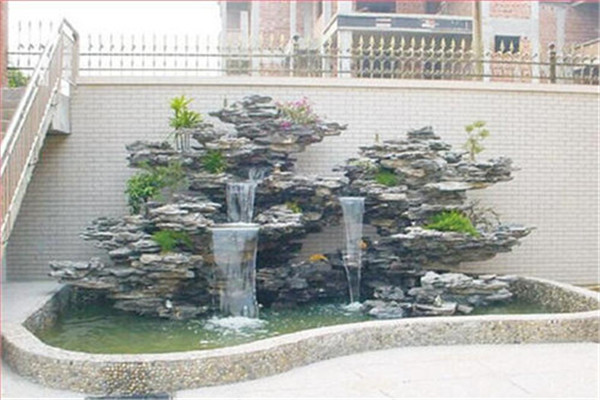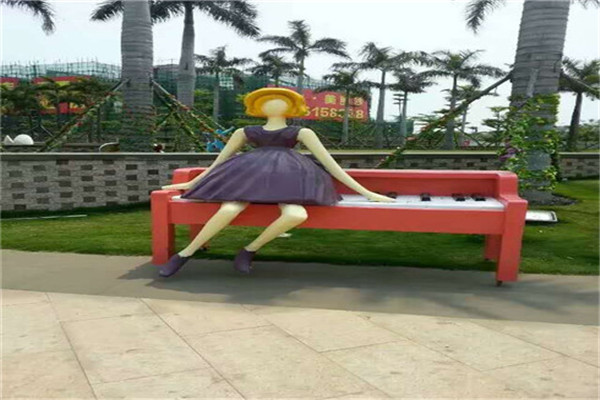
1. Traditional green sculpture shaping: directly pruning the plants with garden art. There are simple geometric shaping (such as sphere, cube, pyramid, cylinder), complex geometric shaping (layered shaping, spiral shaping, etc.), animal shaping and various peculiar shaping (automobile shaping, aircraft shaping, abstract and free shaping, etc.). Common plants include pine and cypress, privet, boxwood, national locust, elm, etc. 2. Grafting: taking a certain plant as the rootstock, grafting plants with different impressions on it, and then making artistic processing of its shapes, such as polychrome chrysanthemum bonsai, polychrome rose bonsai, polychrome peach, polychrome plum, polychrome crabapple, etc. Such as cliff chrysanthemum, tower chrysanthemum, animal shaped chrysanthemum, etc. 2.1 Single plant green sculpture refers to the sculpture formed entirely by one plant or one plant with multiple colors or by grafting multi-color plants. The sculpture has a long viewing period and simple operation. For example, tree sculptures can be kept for a long time only by special pruning, without considering flower changing and water spraying, and the maintenance management is simple. 2.2 Double plant green sculpture refers to the sculpture shaped by two different kinds of plants. The sculpture has a long viewing period and a strong three-dimensional sense, and usually uses the complementary and mutually reinforcing advantages of two plants for modeling. Such as evergreen and deciduous plants, broad-leaved and coniferous plants, lianas and herbs, as well as different colors, species, branches and leaves, such as leaf color, flowers and fruits, branches and stems. 2.3 Mixed plant green sculpture refers to sculpture with three or more kinds of plants. The sculpture has a short viewing period and complicated operation, but it is highly ornamental and lifelike. The common ones are large three-dimensional sculptures, some animal shaped sculptures elaborately composed of flowers, leaves and fruits of different plants according to design requirements, such as peacock, red crowned crane, panda, etc; Or symbolic sculptures with certain cultural connotation and city image, such as idiom allusion sculptures (learning to walk in Handan, dancing at the smell of chickens), Olympic seal, football World Cup, etc.

The types of stone inscription monuments include monuments, memorial monuments, merit monuments, temple monuments, Dianzi monuments, mausoleum monuments, etc. Except for a few wordless steles, they are generally literal steles. Usually, characters are carved on the body of the stele, and some are accompanied by carved patterns. The pedestal and cover of the stele are mostly carved with decorations, birds, animals, flowers, and mascots. The cover of the stele of the imperial family is also carved with dragons and phoenixes. Marble is the most commonly used stone for making the stele, and sandstone and granite are also commonly used. Some of the steles are huge, and some of them become a group of steles. Stone books are written with stone instead of paper, and carved instead of pen, which is very ingenious. There are many famous works of stone tablet processing and stone calligraphy carving. For example, "Xi'an Forest of Steles" includes more than 3000 historical steles from Han Dynasty to Qing Dynasty. It is the largest collection of stone books in China. Together with the "Forest of Steles in Hanlin" under construction in Kaifeng, it can be said that it is a sea of steles, and it is a collection of calligraphies of regular script, line, grass, seal script, clerical script and Wei style by famous calligraphers of all ages. In addition to large-scale carvings such as stele books and cliff carvings, there are also some stone carvings, such as mourning volumes in imperial tombs and modern fine carved small stone books, such as more than 100 mourning volumes of white marble excavated in the tomb of the prince of the Tang Dynasty, and six stone books of "Thirty six Strategies" carved in tile slate in modern Chengdu, a total of 26 pages and 1278 words, bound into a volume with eyeliner, each page is 2.2.6mm, which can be read.

Stone carvings pay attention to lifelike shapes, round and delicate techniques, and smooth and free patterns. Its traditional skills began in the Han Dynasty, matured in the Wei and Jin Dynasties, and became popular in the Tang Dynasty. There are mainly garden sculptures, architectural sculptures, sculptures, stone carving handicrafts, and hundreds of products: marble mantelpiece, figure sculptures, reliefs, abstract sculptures, fountains, flower pots, Roman columns, railings, pavilions, busts, door covers, stone benches, bathtubs, animal carvings, tombstones, antique sculptures, etc. Stone carvings have a long history. They pay attention to lifelike shapes, round and delicate techniques, and smooth and free patterns. Carving products mainly include figures, animals, fireplaces, flower pots, balustrades, fountains, reliefs, dragon pavilions, dragon pillars, jade pavilions, birds and animals, and various high-quality sculptures. It not only has the charm of ancient art, but also has the elegant and fast modern art style. It enjoys the reputation of "excellent workmanship" and "groundbreaking" at home and abroad. It is a collection of creative, design, production of various works of art. In short, it is a work of art carved from stone.

The openwork carving technique is an original carving technique in Putian. There are still many "gold inlaid openwork lanterns" and "embossed flower windows" in the Palace Museum in Beijing, which all support the traditional craft charm of Putian wood carving. From the end of the Ming Dynasty to the beginning of the Qing Dynasty to the Republic of China, Putian wood carvings were mostly made of longan wood, which was rich in local production. Guangxi EPS components Carved into various military generals, women or gods, antiques, supplemented by high quality EPS components The painting with old lacquer makes the work more deep in color. Zhu Bangshou, Huang Dangui, Chen Xiange and other famous painters, together with Liu Ronglin, formed a round sculpture character style characterized by Pu style military generals. So far, many figures and architectural decoration wood carvings have been left for future generations in Guandi Temple, Yuanxia Village, Jiangkou Town, Jiufeng Village, Wutang Town and other old folk houses, These masterpieces, which combine round, transparent and relief carvings, are treasures of Putian wood carving art.

Auxiliary tools for wood carving: mainly hammer, wood file, axe and saw. The purpose of the axe is to cut a large amount of wood with the help of paring. Pay attention not to use too much force when cutting. Do not cut straight up and down. The edge of the axe should be kept at about 45 degrees with the vertical wood grain, otherwise the wood will crack. Hainan GRC component wood file is mainly used in the fine blank stage of round carving, which can replace the flat knife to smooth the chisel marks for polishing; It can also take the place of round knife or oblique knife for hollowing. The function of the wood file is also that it can quickly adjust the modeling structure in a large area, and can be used in combination with the carving knife to make the turning and turning of the figure's clothing patterns vivid and smooth, with both virtual and real effects. The shape of hammers for wooden sculptures in Hainan is flat, flat, wide and square. The dimension of hammer face can be controlled at about 7 × 5.5 × 2.5 cm. Too narrow or too thick will affect the accuracy of the hammer's landing point and the uniformity of force. There are two kinds of hammers: wooden hammers and iron hammers. The wooden hammers generally use hardwoods with a large proportion of wood, such as mahogany, boxwood, sandalwood, beech and fruit trees. The specifications can be controlled at 27 cm in length, 55 cm in width and 45 cm in thickness; The grip is round and slightly flat, and the size is suitable for holding in the hand.





